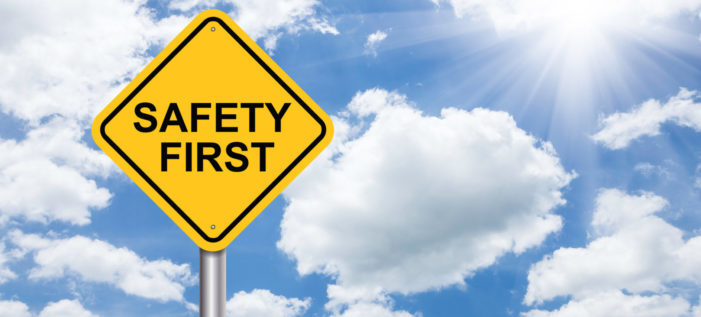Hitting the goal of zero injuries has been a buzzword as of late in the maritime industry. Since the founding of the International Labor Organization (ILO) in 1919, occupational safety and health (OSH) has been at the forefront, however, although most of the efforts have proved beneficial, many others have been brought into question. What is really hiding behind Zero? Have you ever wondered if zero injuries of safety may not be the goal? What if focusing on continuous safety improvement equals Zero?
To begin with, in today’s maritime world and under the zero injuries vision, operators are adhered to a kind of “rehearsal” for fatalities. In other words, once accidents occur, operators count the defects, the occurrence rate, possible injuries or fatalities. This is hands down not a solution to the accidents occurring every year on the high seas. It is said that good performance may be bad if not better! Several fine safety cultures managed to meet the goal of zero injuries, to find that a tragic event can break Zero. Take for instance the case of the USS Fitzgerald; the US Navy determined that the crew and leadership on board failed to plan for safety, the crew was unprepared for such situation. If it happened to a US Navy destroyer, it can happen to every ship. Safety culture is not a contract that we can put into force; desire is actually required to improve safety standards!
Safety is a choice that seafarers make on their own, sometimes in harsh conditions. In most cases poor organizational culture, rather than the safety training of the seafarer proved the root cause of the incidents. Unfairly, seafarers bear the brunt of the criticism when accidents happen.
All that said, safety culture must be nurtured every single day; there is work to be done in order to maintain and improve the maturity of the approach to safety; probably through developing a best practice for the implementation, processes, operation and auditing of the ISM, ISPS and MLC codes, and continuing beyond training on human performance, human factors and communication, especially those in high risk environments.
Certainly, setting a goal of zero injuries or accidents is a necessary one, however, things leading to fatality are directly linked with the lack of understanding human behavior. Thus, searching zero unsafe behaviors may lead to zero injuries. Operators need a different approach to achieve a safer work environment improving quality and developing a common industry training and best practice processes on health and safety, and reducing risks.
About Apostolos Belokas
 Apostolos is a Maritime Safety, Quality & Environmental Expert, Consultant, Trainer and Project Manager with more than a 20-year background in shipping as Technical, Marine, Safety & Training Superintendent and Consultant. He entered the industry back in early 90’s as Engineering Superintendent with a leading ship manager operating a mixed fleet of bulk and oil/chemical tankers. He then shifted to regulatory compliance and QHSE as superintendent and later as a Consultant and Trainer. Apostolos has successfully completed a wide range of QHSE projects including 250+ management system projects (ISM/ISO 9001-14001-18001/TMSA/MLC), 500 vessel and office audits to various standards and he has trained more than 8,000 people in a wide variety of QHSE subjects. He has also presented and chaired to more than 40 conferences. He holds Mechanical Engineering Bachelor and Master’s specialising in Energy & Environment and Master’s Degree in Maritime Business and Business Administration (MBA), all of them awarded with distinction. Apostolos is the Managing Director of SQE MARINE, SQE ACADEMY and Managing Editor of SAFETY4SEA.
Apostolos is a Maritime Safety, Quality & Environmental Expert, Consultant, Trainer and Project Manager with more than a 20-year background in shipping as Technical, Marine, Safety & Training Superintendent and Consultant. He entered the industry back in early 90’s as Engineering Superintendent with a leading ship manager operating a mixed fleet of bulk and oil/chemical tankers. He then shifted to regulatory compliance and QHSE as superintendent and later as a Consultant and Trainer. Apostolos has successfully completed a wide range of QHSE projects including 250+ management system projects (ISM/ISO 9001-14001-18001/TMSA/MLC), 500 vessel and office audits to various standards and he has trained more than 8,000 people in a wide variety of QHSE subjects. He has also presented and chaired to more than 40 conferences. He holds Mechanical Engineering Bachelor and Master’s specialising in Energy & Environment and Master’s Degree in Maritime Business and Business Administration (MBA), all of them awarded with distinction. Apostolos is the Managing Director of SQE MARINE, SQE ACADEMY and Managing Editor of SAFETY4SEA.






























































